Asheville's Biltmore: 250 Rooms, 65 Fireplaces, 2 Lions
A walk through "America's Biggest Home"—a beautiful and colossal Southern masterpiece
The Biltmore House and Gardens in Asheville is a kind of homage to a 19th century French chateau, rising up in stately magnificence in the North Carolina countryside. A California equivalent might be Hearst Castle on the central coast, an epic edifice built with grand expectations and even grander wealth.
But the Biltmore is unique unto itself, for its gorgeous setting can match anything France or California can throw at it: the Blue Ridge Mountains.
The Blue Ridge does indeed seem to be blue at times, as it blends in with the colors of the sky.
Perhaps the strongest color sensation you get, however, is not blue but green. While driving the famed Blue Ridge Parkway or other roads in the area, you see so many varieties of trees, and so many varieties of green. It is like a trip through parts of Oregon or Vermont, except that the locals talk with soft North Carolina accents.
It must be pretty fabulous to be there in the fall when the green leaves turn all sorts of colors. If you’re a dedicated leaf peeper, and you haven’t been there, put it on your bucket list.
Later this week we will show you the spectacular azalea show now being staged in the gardens, but today we’re talking about the home, which is pretty spectacular in itself.
This little cottage was the country home of George Washington Vanderbilt and his wife Edith. Both were New Yorkers, and they loved to entertain here when not camped out in their Fifth Avenue mansion. When out-of-towners came to visit they always had a place to stay, for there were 250 rooms, 65 fireplaces, 43 bathrooms, and 34 bedrooms.
Last fall the Biltmore and much of Asheville and western North Carolina got beat up pretty badly by Hurricane Helene. Any place near a river fell under siege. Torrential rains caused the rivers to overflow their banks and swallow up streets and roads.
Rivers of fast-moving water and debris swept uninvited into people’s homes. The only resort for some was to scramble to safety on their rooftops. With the roads clogged with water and mud, there was no way to get in or out of the worst-hit areas. Noah’s flood had come to the Blue Ridge.
Fast action saved some but not all. North Carolina’s death count exceeded 100 and that number more than doubles when you count Helene’s victims in other states. Asheville’s River Arts District (RAD) and small country towns such as Swannanoa incurred so much damage they are still struggling to make it all the way back. The Blue Ridge Parkway is only open in sections.
But the good news is that most of western North Carolina is up and running again, and ready to greet visitors. One such place is the Biltmore. It appeared to look every bit as good as it did last century when swells such as the Vanderbilts, Astors, and Rockefellers sat down for dinner in the Banquet Hall.
The hall could seat 64 guests for dinner, and all 64 of them could sit at the table together. The evening meal usually consisted of seven courses, and a person typically needed 15 utensils to make it all the way through.
Fresh fish came by train daily from New York, enough to feed 50 people. Lobster for 50 was also a regular item on the menu. All these shipments arrived twice a week on the Biltmore’s own railroad spur and were stored in refrigeration units in three kitchens in a house with four acres of floor space. Dozens of staff kept things humming smoothly.
Between courses, guests could look around at the ancient tapestries and Impressionist masterpieces on the walls. The ceiling was 70 feet high.
George was the grandson of Cornelius Vanderbilt, one of the world’s wealthiest men in the 1800s, who made his money in shipping and industry. George managed the family’s extensive business and real estate holdings and inherited a good chunk of its fortune.
He was also a quiet and shy man of culture, whose idea of a good time was to curl up with a good book. If you were visiting the Biltmore, you could always find something to read. Its library consisted of 23,000 volumes—
Tired of reading? Well, then, step into a sanctuary of a different sort. Light a Cuban cigar, sip a vintage bourbon, and shoot some pool with friends.
Guests could also swim at the indoor pool, bowl, or work off that seven-course dinner in an exercise room. Outdoor pursuits included horseback riding, shooting, and strolling around the garden and grounds.
When people wished to retire for the evening, they headed upstairs to go to bed. Made of stone, the spiral staircase consisted of 102 steps and rose four floors. The multi-tiered iron chandelier at its center weighed 1,700 pounds.
The Biltmore was George Vanderbilt’s idea and vision. He had come to Asheville many times as a young man. He loved the Blue Ridge Mountains and the town at the center of it, which was then a favorite resort of Eastern vacationers.
His dream became real on Christmas Eve 1895. That was when it opened officially. It took six years, 11 million bricks, and a thousand hard-working men to build.
The architect was Richard Morris Hunt, and his showplace creation was hailed as a cutting edge piece of design for its time. It featured hot and cold running water, elevators (if you didn’t want to take the stairs), fire alarms, refrigerated storage, Bell telephones—all uncommon luxury items not to be found in most American households of that day.
Nor could most people afford two lions, carved of Italian marble, guarding the entrance to their house. You saw the first; now say hello to its twin.
In other news: I was pleasantly surprised to learn last week that Substack had ranked this column “68th in Travel and rising.” I did not know that Substack kept such rankings, but considering that there are thousands of writers on the platform, it makes sense. What’s also funny is that I didn’t even think I was writing travel.
My recent article on the Underground Bar at the Mob Museum in Las Vegas was indeed focused on travel, and it generated a nice response from people, including Mark Chester of Woods Hole, Massachusetts: “Very cool piece…liked it…definitely a bar to unravel…you’re prolific…do you ever sleep?” Not enough, Mark, that’s for sure.
Dan Crouch of Oakland, California also enjoyed it, especially the 1920s shot of author Scott Fitzgerald and wife Zelda: “Love the photos!” he writes. “You can almost see that Zelda was going to be a lot of trouble and more. I heard a couple of 100th anniversary tributes on the radio to The Great Gatsby. The fact that there’s so much packed into such a short novel seems to fascinate people. Lightning in a bottle.”
As always, folks, thank you for your support. Keep those emails and texts coming. And be sure to tune in later this week for a 23-second video from the Biltmore Gardens. I guarantee it: you will not be disappointed.

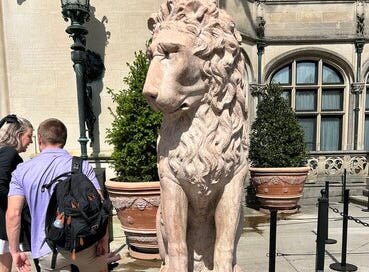



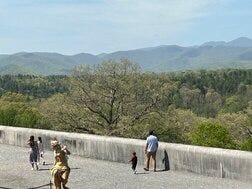

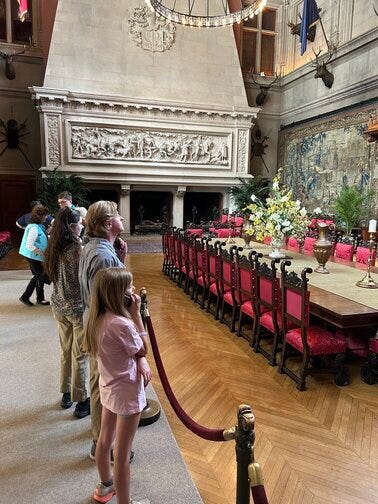
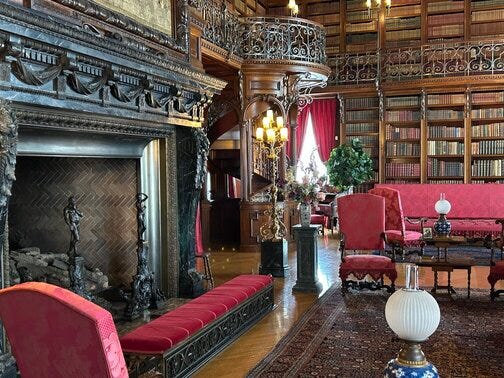

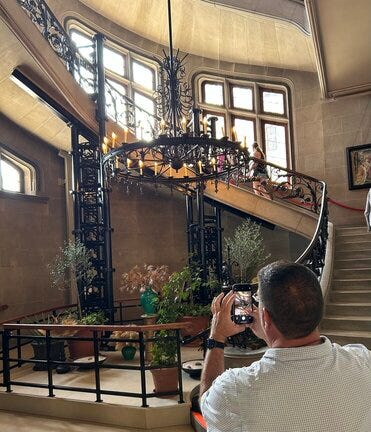
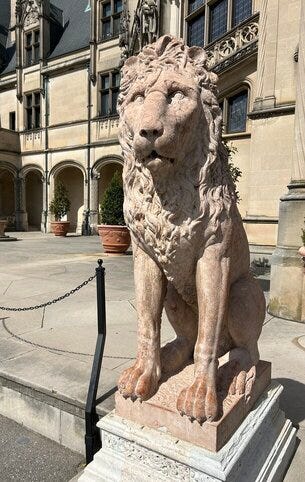
r there i NC. I will ask them if they have been there. Coach